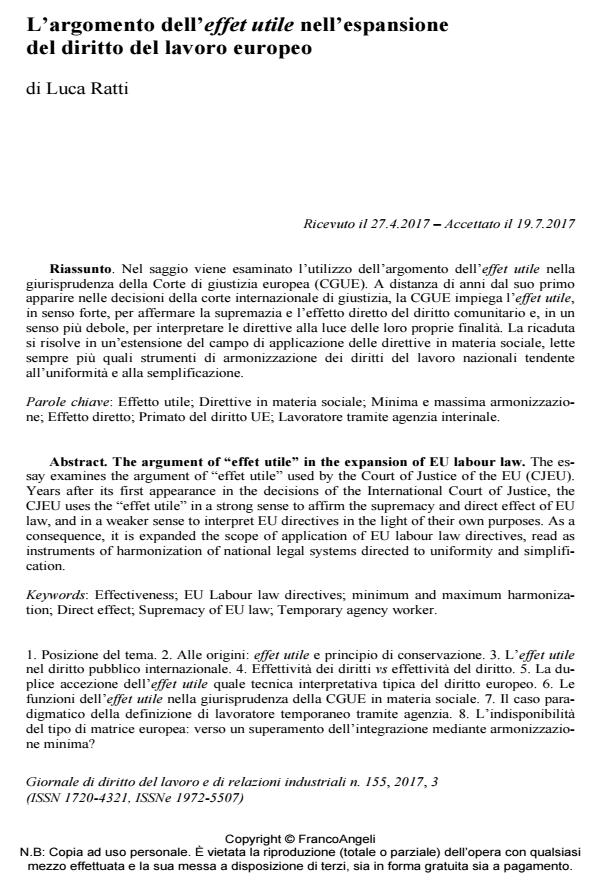L’argomento dell’effet utile nell’espansione del diritto del lavoro europeo
Titolo Rivista GIORNALE DI DIRITTO DEL LAVORO E DI RELAZIONI INDUSTRIALI
Autori/Curatori Luca Ratti
Anno di pubblicazione 2017 Fascicolo 2017/155
Lingua Italiano Numero pagine 25 P. 497-521 Dimensione file 881 KB
DOI 10.3280/GDL2017-155004
Il DOI è il codice a barre della proprietà intellettuale: per saperne di più
clicca qui
Qui sotto puoi vedere in anteprima la prima pagina di questo articolo.
Se questo articolo ti interessa, lo puoi acquistare (e scaricare in formato pdf) seguendo le facili indicazioni per acquistare il download credit. Acquista Download Credits per scaricare questo Articolo in formato PDF

FrancoAngeli è membro della Publishers International Linking Association, Inc (PILA)associazione indipendente e non profit per facilitare (attraverso i servizi tecnologici implementati da CrossRef.org) l’accesso degli studiosi ai contenuti digitali nelle pubblicazioni professionali e scientifiche
Nel saggio viene esaminato l’utilizzo dell’argomento dell’effet utile nella giurisprudenza della Corte di giustizia europea (CGUE). A distanza di anni dal suo primo apparire nelle decisioni della corte internazionale di giustizia, la CGUE impiega l’effet utile, in senso forte, per affermare la supremazia e l’effetto diretto del diritto comunitario e, in un senso più debole, per interpretare le direttive alla luce delle loro proprie finalità. La ricaduta si risolve in un’estensione del campo di applicazione delle direttive in materia sociale, lette sempre più quali strumenti di armonizzazione dei diritti del lavoro nazionali tendente all’uniformità e alla semplificazione.
Parole chiave:Effetto utile; Direttive in materia sociale; Minima e massima armonizzazione; Effetto diretto; Primato del diritto UE; Lavoratore tramite agenzia interinale.
Luca Ratti, L’argomento dell’effet utile nell’espansione del diritto del lavoro europeo in "GIORNALE DI DIRITTO DEL LAVORO E DI RELAZIONI INDUSTRIALI " 155/2017, pp 497-521, DOI: 10.3280/GDL2017-155004